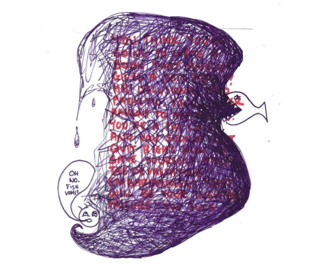
Oh, the inner critic. We all have one. Yammering on, telling us all the ways we suck, we will fail, we shouldn’t even try. Even now, as I write these words, my inner critic tells me that I’m not a writer and that no one cares what I have to say. As you can tell, my darling reader, I continue to write regardless. I don’t take what my critic says too seriously.
The basic gist behind why we have an inner critic is: once upon a time, someone was mean to us (a parent, a bully, a teacher) and we internalized their voice. What that influential person said to us became the things we say to ourselves.
We all tend to be our own worst enemies. We impose limitations on our capacities that are rooted more in our wounding than they are in reality. In order to live up to our potential, we need to strip the inner critic of his power.
One of the most effective antidotes to the critical voice is the ability to tap into the playfulness of the inner child. Before children internalize critical voices, they are free and unafraid of authentic self-expression. Children who are not yet influenced by familial and societal norms aren’t concerned with looking silly or being perceived as stupid. They just are. They just be.
So how can we quiet the inner critic? How can we tap into our inner child?
- Let it Out.
Write all of the negative thoughts your critic has to say. Then let your inner child scribble, write, and draw all over it.
For example, my inner critic writes:

My inner child responds:

You might even bring a third part into the mix, one with an encouraging voice. For example…

- 2. Ugly
Draw something intentionally ugly. Write something intentionally stupid. Did you do it? Are you still alive? Journal, what does your critic have to say about your ugly drawing? What does your inner child have to say about it? What do YOU have to say about it? YOU, who are neither the child nor the critic. YOU, who is the one witnessing and watching and listening to them both. YOU, who can observe these parts with a sense of distance.
- 3. Personify the Critic.
If your inner critic were a person, creature, animal, blob of color…what would it look like? Draw it. Or you can also find an image in a magazine or online that best represents the personified version of the critical part of you. Print it out, cut it out, glue it in your journal. Then use your imagination to give it a name, age, gender, and personality. Whenever you notice a critical thought in your head, pretend it is this image talking to you. This gives you some space from the critical voice and your sense of YOU.
- 4. Contrary Action.
Pay close attention to the ways your critical voice shows up in your day to day life. Then journal, what does the inner critic say to you most often? What does it stop you from doing? Then take some opposite action. Do something your critic doesn’t want you to do. Especially if it scares you. Especially if it is uncomfortable. Even if the thing you do doesn’t go well, that’s not the point. The point is, you are reprogramming your habits to act contrary to the limitations imposed upon you by your critic.
- 5. Be a Child.
Can you connect to your inner child? What does that part of you want to do? Do it! Does your inner child want to watch cartoons? Watch! Walk barefoot on the grass? Go for it! Jump on the bed? Yes! Fingerpaint? Please! This is not about doing something “right” or “productive.” This is an intentional practice in existing in a specifically childish way. This is a practice of operating in the world from a different aspect of yourself.
- 6. Thank the Critic.
Chances are your inner critic is there because it wants what is best for you. My inner critic tells me I’m a terrible writer because he doesn’t want me to make a fool of myself in public. In this way I can thank my inner critic for his good intentions, while noticing when his opinions stop me from taking important steps towards achieving my goals. Journal, what is your inner critic trying to protect you from? Can you give your critic some gratitude?
YOU, my reader, are a magnificent creature. Your inner critic is just one, of many, parts of you. This part doesn’t define you. This part doesn’t control you. It is time, right here and now, to get out of your own way and say, “Hey critic, I am done allowing you to keep me small.”
Liat escorts people through their struggle, suffering, and stuckness to uncover internal resources and a more radiant version of themselves. When she’s not a therapist, she’s a writer, a wilderness-lover, and a good witch. For more about Liat’s “not-your-average” therapy services and blog, check out The Wild and Authentic Path or click here for a gift.
Liat Alon, Associate MFT, ATR-BC, LCAT, RYT
Under the supervision of Angelique Poisson, LMFT # 103833
The post Hey Inner Critic: Shush! 6 Techniques to Quiet That Nagging Voice appeared first on Pick the Brain | Motivation and Self Improvement.
* This article was originally published here

No comments:
Post a Comment